Top speed 383 km/h Wingspan 49 m Cruise speed 278 km/h First flight June 20, 1950 | Range 2,092 km Length 30 m | |
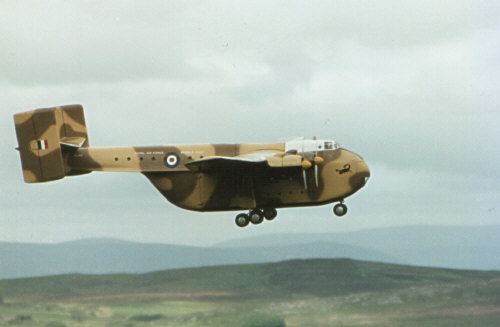 | ||
The Blackburn B-101 Beverley was a 1950s British heavy transport aircraft built by Blackburn and General Aircraft and flown by squadrons of the Royal Air Force Transport Command from 1957 until 1967.
Contents
- Design and development
- Variants
- Operational history
- Operators
- Accidents and incidents
- Survivors
- Specifications B 101
- References
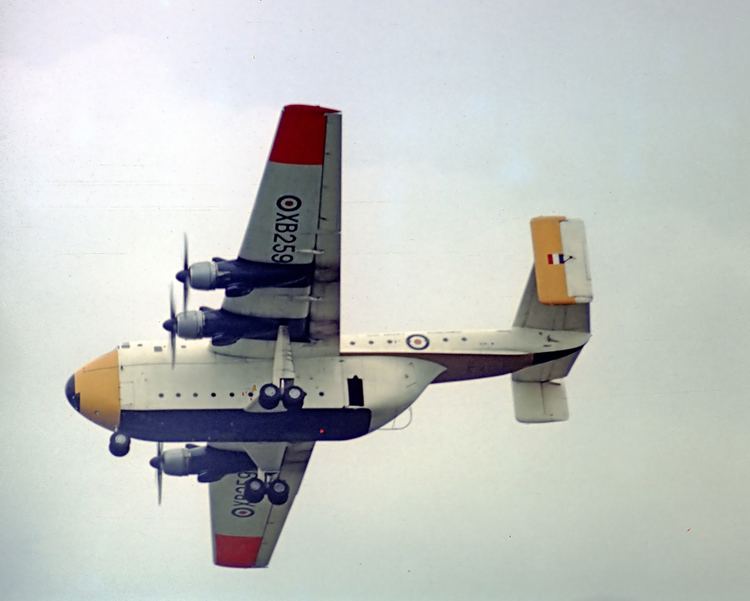
Design and development
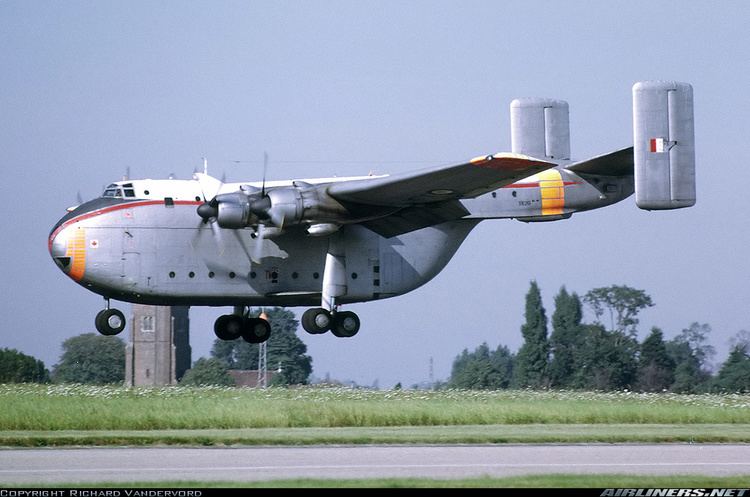
Designed and built by General Aircraft as the GAL.60 Universal Freighter, the first aircraft was dismantled at the Feltham, Middlesex factory and transported to Brough in Yorkshire to have its maiden flight on 20 June 1950. This was followed by a second, the GAL.65, which was modified from the original. Clamshell doors replaced a combination of a door and ramp, and the tailplane boom received seating for 36 passengers. The Bristol Hercules engines became Bristol Centaurus with reverse-pitch propellers, a feature that gave it a short landing length and the ability to reverse under its own power. The takeoff run at full load was given as 790 yards, the landing run at full load, 310 yards.
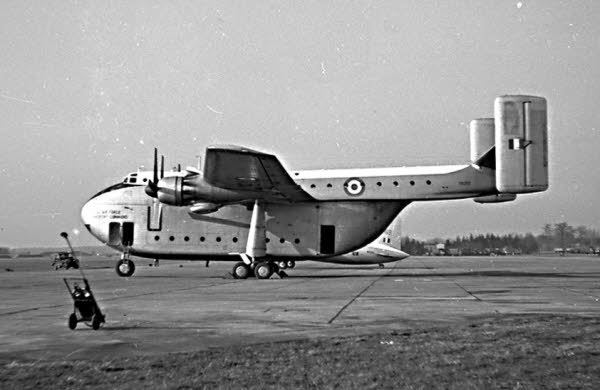
The RAF placed an order on 1 October 1952 for 20 aircraft as the Beverley C.1 (Beverley, Cargo Mark 1). Further orders were placed on 30 July 1954 for nine, 2 January 1956 for eight and another ten on 24 September 1956, a total order of 47 aircraft. All Beverleys would be built at Brough.
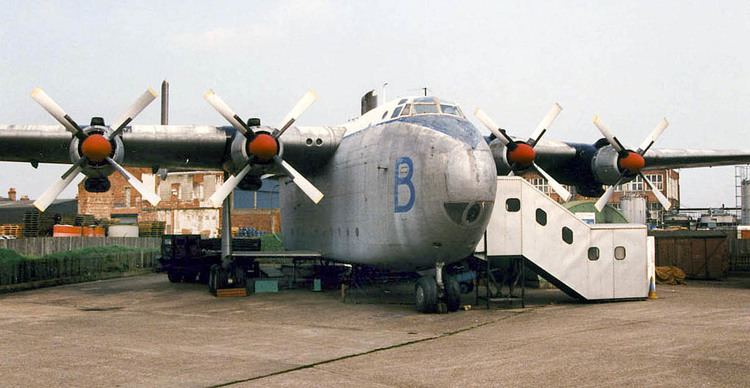
The aircraft was a high-wing cantilever monoplane with a fixed undercarriage. The large fuselage had a tailboom fitted with a tailplane with twin fins. The tailboom allowed access to the rear of the fuselage through removable clamshell doors. A 36 ft (11 m) main fuselage space was supplemented by passenger accommodation in the tailboom. The main cargo hold could accommodate 94 troops, with another 36 in the tailboom. In operation, it was regarded as "ungainly but highly effective" and was described by Air Chief Marshal Sir Robert Freer as "like something out of the Ark, but it was a superb supply dropper."
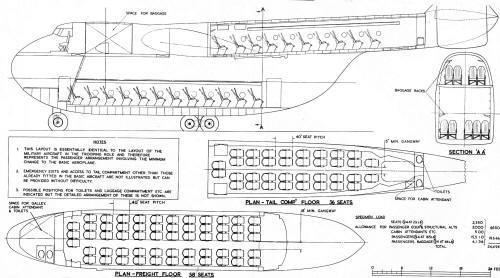
A device called an Elephant's Foot could be fitted under the centre of the fuselage just forward of the clamshell doors when it was in use. The foot was held in place by pins inserted through a triangular arrangement of attachment points on the fuselage and was fitted during loading to prevent the Beverley from tipping over when heavy items were loaded into the freight bay.
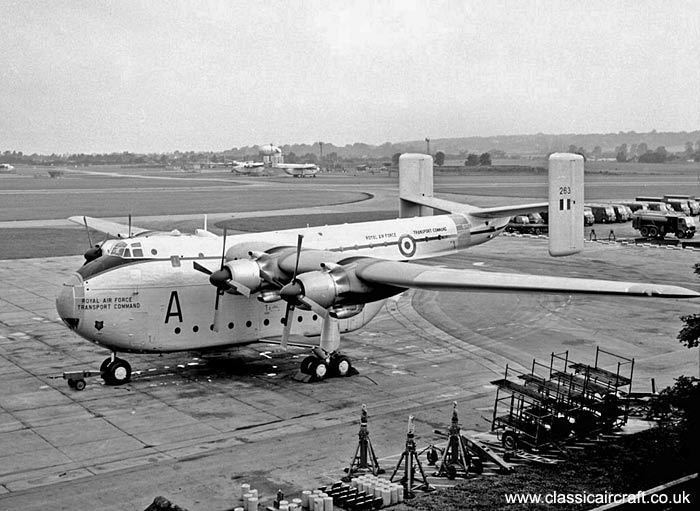
The aircraft was designed for carrying large bulkloads and landing on rough or imperfect runways, or mere dirt strips. It could trace its design back to the GAL49 Hamilcar glider of the Second World War. When it entered service it was the largest aircraft in the Royal Air Force (RAF). It had a large interior cargo area split into two levels which amounted to around 6,003 ft³ (170 m³) of space. Paratroopers in the upper passenger area jumped through a hatch in the base of the boom just in front of the leading edge of the tailplane. Paratroopers in the main body exited through side doors.
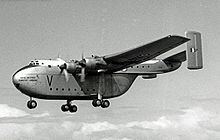
The Beverley was equipped with toilets, which were situated in the tail beyond the paratroop hatch located on the floor of the tailboom. One fatality was caused by a serviceman who fell twenty feet to the ground when exiting the toilet, unaware that the paratroop hatch had been opened. Modifications were made to prevent the toilet doors from being opened when the paratroop hatch was open.
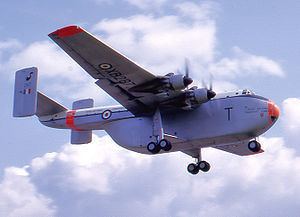
In total, 49 of the aircraft were produced, with the last one being manufactured in 1958, and final retirement from RAF service was in 1967.
Variants
Operational history
The first production aircraft from an original order for 20 from the Royal Air Force flew on 29 January 1955. The first operational aircraft was delivered to 47 Squadron Royal Air Force at RAF Abingdon on 12 March 1956. 53 Squadron, also at RAF Abingdon, received Beverleys in early 1957 but was absorbed into 47 Squadron in June 1963. They were flown until October 1967 when the squadron disbanded. 30 Squadron received its Beverleys in April 1957 at RAF Dishforth subsequently deploying to RAF Eastleigh, Kenya and RAF Muharraq, Bahrain where it disbanded in September 1967.
The longest-serving Beverleys were in the Far East; 34 Squadron received its aircraft at RAF Seletar in October 1960 and continued flying them until the end of 1967. During this time, 34 Squadron carried out flood relief work in South Vietnam. Prior to this, from June/July 1959, the first four Beverleys to go to the Far East formed the Beverley Flight, 48 Squadron based at RAF Changi. The sixth squadron to fly the Beverley was 84 Squadron at RAF Khormaksar, Aden which flew them from 1958 until August 1967 when they were exchanged for Hawker Siddeley Andovers.
Initially, the aircraft were silver overall, but later, those operated by the squadrons based in the Middle East were given an overall sand camouflage finish.
Operators
Accidents and incidents
Nine aircraft were lost in service with the RAF, including one in the Sutton Wick air crash. Two of these were writeoffs after explosive damage (one landmine, one bomb).
Survivors
Only one Beverley has survived: XB259 is on display at Fort Paull, just east of Hull, in England. Two other aircraft were on public display but have since been scrapped:
Specifications (B-101)
Data from Aeroflight
General characteristics
Performance
